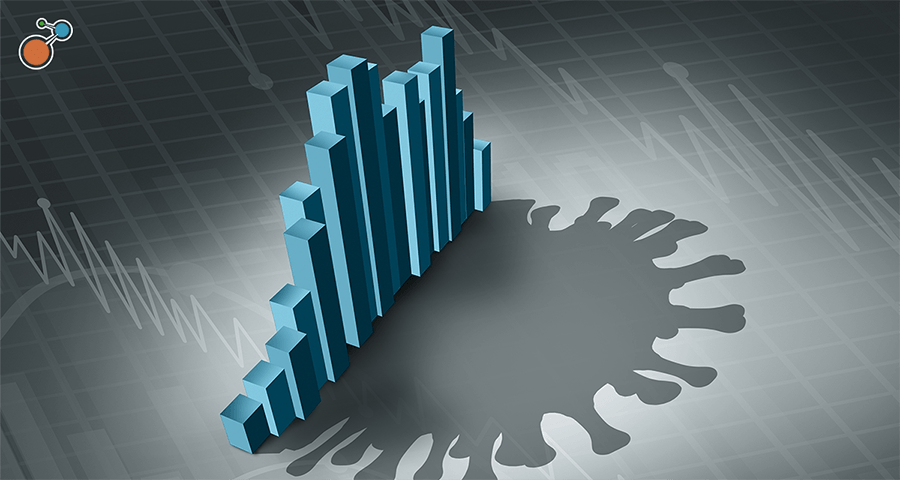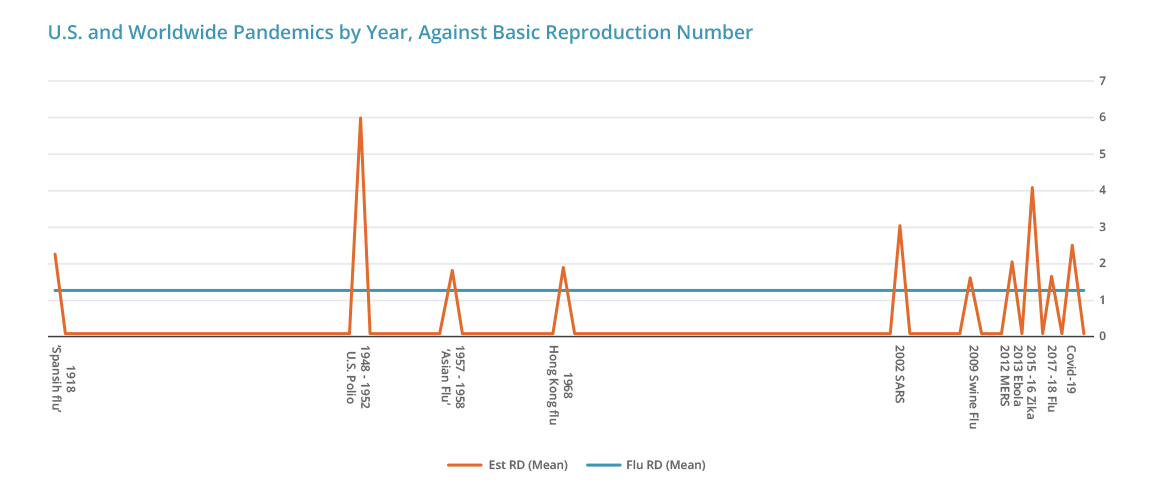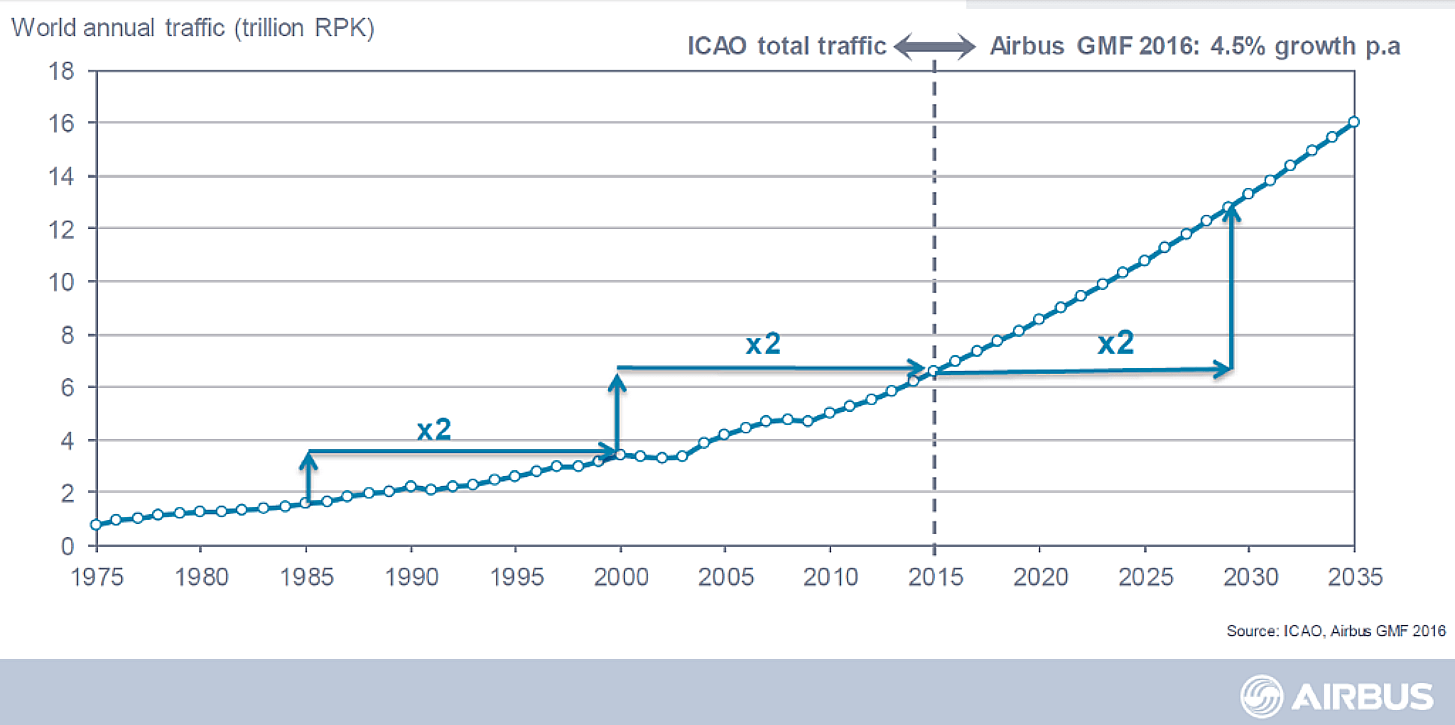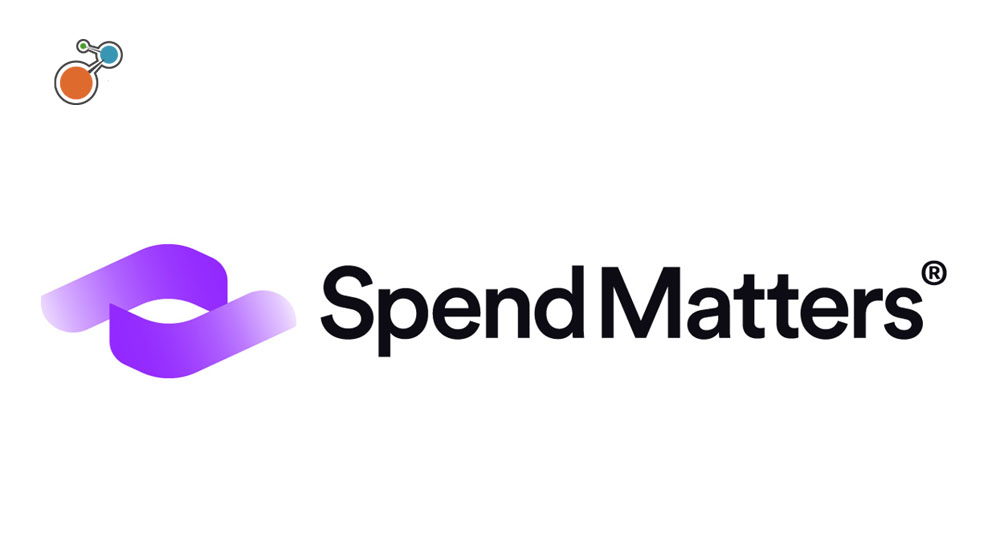By Scott Fenstermaker
“It’s all chance, chance rules our lives. Not a man on earth can see a day ahead, groping through the dark.” — Jocasta (denying the oracle’s warning), Oedipus the King
When organizations first started to wrestle with COVID-19 and its implications, a common question would surface: should a risk manager have been able to foresee it?
That notion may seem ludicrous on its face. A fat-tail event like a pandemic, city-destroying hurricane, or systemic market failure appears only in the forecasts of psychics and prophets. These are, by definition, random events, impossible to understand from observing mundane data collected from average days when very little happens…
Perhaps…
A Tale About a Turkey
Nassim Taleb draws a rather disturbing analogy between the ability to make predictions and a Thanksgiving turkey. If it could forecast its own life expectancy using data from the first thousand days of its life, the turkey will expect to live forever. It’s only on day 1,001 — the day before Thanksgiving — when the turkey’s fortunes undergo a sudden “market correction.”
We understand that the turkey could not be expected to forecast its own last day. But are there any conclusions that it could have drawn based on available information?
A smart turkey, for example, might have noticed that the largest turkeys around him would disappear around the same time each year. It might also perceive that these disappearing turkeys were all around a certain age, were each pulled out of the pen by the same farmer, and were never to be seen again.
Even if our friend the turkey could not have predicted precisely when it was to be his turn, the observable data is starting to suggest some eerie patterns. A smart turkey should probably have been wary of something.
Observable Data on Pandemics
In the past 100 years, we’ve had approximately 11 major airborne or contact-spread epidemics affecting the United States. Seven of those outbreaks—more than half—came after the year 2000.
This graph shows each of the 11 most noteworthy disease outbreaks (both U.S. and worldwide) with their basic reproduction rates (R0, or “R-naught”). The reproduction rate illustrates contagiousness (a rate of 2 means that each infected person will transmit the disease on average to two other persons). For reference, the average R0 for the seasonal flu is 1.3.
Though a grouping of 11 outbreaks is not enough data to render statistically significant findings, it suggests a few dynamics:
- Since the year 2000, the U.S. has been experiencing a pandemic-level event about once every three years.
- The trend seems to be accelerating. Since 2010, they’ve been arriving once every two years.
- Each of these outbreaks has a measured transmission rate at or above that of the seasonal flu. Since 2000, three of the seven outbreaks have been at least twice as virulent as the flu.
The Impact of Globalization
Is the rate of pandemics truly increasing, as the diagram suggests?
It’s impossible to say from this data. The crowding of pandemics within the last 20 years could, theoretically, be a statistical anomaly. But it does coincide with the rise of other factors — like increasing international travel — that are the correlates of a globalizing economy.
In March, the Wall Street Journal published an article called, “Global Viral Outbreaks Like Coronavirus, Once Rare, Will Become More Common,” in which Editor Jon Hilsenrath writes:
“Epidemics of infectious diseases have become a regular part of the global landscape in the past quarter-century, thanks in part to economic trends including urbanization, globalization and increased human consumption of animal proteins as society becomes more prosperous.”
Speaking about our fragility to future infectious disease outbreaks, Dr. Keith Kaye, president of the Society for Healthcare Epidemiology of America (SHEA) and professor of internal medicine and infectious diseases at the University of Michigan, says, “We are probably a plane ride away from a major threat in the U.S. That sounds overly dramatic but it’s true.”
If globalization (and its resulting international travel) can increase the frequency of global viral outbreaks, we might want to examine the forecast for international travel in the coming years to see if our danger will grow.
In 2016, aircraft manufacturer Airbus predicted that world air travel would double by 2030. This projection was obviously made several years before the COVID-19 outbreak locked down the world, however, the sentiment still stands. While experts say business travel may never fully recover, leisure travel is expected to roar back once it’s safe. And that will increase the risk of passengers spreading an airborne pathogen early within the disease’s lifespan.
Air traffic will double in the next 15 years
If this is all true, why only now have we encountered a virus of such social disruption? After all, we’ve dealt with recent outbreaks of SARS and Zika, both of which were more contagious as measured by the basic reproduction number, and neither of those outbreaks were as socially disruptive as COVID-19.
Troublingly, there is no consistent answer to this question. We do not owe our good fortune (at least, good fortune until COVID-19) to a single policy or technique that served as a reliable backstop. Consider the salient factors:
- During the 2002-04 SARS outbreak, contact tracing was effective because the symptoms were sudden and relatively severe, making identification easier. SARS also had difficulty replicating in humans, so the virus became less potent over generations of spread.
- In the case of the 2009 H1N1 flu outbreak, a vaccine was available within about 8 months. This in combination with a low mortality rate (0.02%, compared to 0.1% for seasonal flu) helped manage the outbreak.
- The 2014 outbreak of Ebola was among the scariest of pandemics. The morality rate for Ebola is 50% — meaning half of those who contract the disease will die. In this outbreak, however, the disease transmission never became aerosol. The disease spread through direct contact with bodily fluids like blood and sweat, and only in the last stages after obvious, severe symptoms.
The factors that made the most difference—reproduction, mortality, transmission method, incubation period, obvious symptomology, mutation properties—vary randomly and do not necessarily fall within a predictable variance. Even within the realm of known diseases, the next version could have a reproduction or mortality rate higher than any experienced in the past.
Further, an outlier in one of these random variables is not a necessary precondition for a socially disruptive disease. Notice that COVID-19, the most socially disruptive pandemic since the Spanish flu of 1918, has a mild reproductive rate compared to other recent pandemics. Its mortality rate (~1-2%), while much higher than the seasonal flu, is also moderate compared to other diseases like Ebola.
What makes the coronavirus such a threat is the way these variables came together. COVID-19 has above-average reproduction and a long, silent incubation period that make it very hard to trace. None of the contributing variables (R0, symptom severity, incubation timeline) are outliers in and of themselves, but they combine in a particularly insidious way.
The Predictability of What’s Ahead
Socially disruptive pandemics, though not explicitly predictable, are utterly foreseeable. Based on the data available on pandemics, as well as on increasing trends in globalization, urbanization, travel, and other relevant factors, the frequency of pandemics is likely to increase as time goes on.
Each new pandemic represents a fresh spin of Russian roulette regarding the salient attributes of the disease. We face threats not only from novel viruses, but also from outlier attributes within known diseases, and most perniciously, from combinations of factors that make a disease simultaneously contagious, deadly, and difficult to trace.
We are still probably underestimating the potential business disruption, in both frequency and severity, from future pandemics. Ideally, government leaders both in the U.S. and abroad will work over the coming years to solidify procedures for combatting naturally occurring and potentially man-made viral outbreaks, but the pace of disruptive pandemic risk exposure could be quickening. The “COVID-19 experience” may cease to be a once-in-a-lifetime event.
Is it possible to predict a pandemic? Child’s play. They’ve been happening every 2-3 years since 2010 and there is some reason to suspect that, given certain globalization factors, that frequency may increase. Is it possible to predict a fat-tailed, socially disruptive pandemic? Not explicitly, no. But every pandemic we experience, disruptive or not, is a roll of the virulence dice that will eventually come up snake-eyes.

Where We Cannot Predict, We May Still Foresee.
We now have a pretty good idea about what to do to protect the business if a pandemic happens again. But consider this: The next crisis will probably not be a pandemic. Most consequential disruptive events are random, and some are (unlike pandemics) completely unforeseeable. And even if you have an inkling about what’s coming, there are an infinite number of random factors that will shape the actual impact.
We should be learning a broader lesson concerning the care and imagination with which we evaluate infrequent (fat-tailed) risk events in general. One Riskonnect customer said that when he originally proposed adding pandemics to his company’s risk register, he was nearly laughed out of the room. However, there was ample data at the time to support his point, available for anyone who cared to look.
We must now learn to ask ourselves, what other rare-but-disruptive eventualities are we still laughing out of the room?
To survive without sacrificing operations, organizations need to think broadly about the types of risk events to anticipate and build resilient businesses that can absorb several crises at once. With severe events becoming more commonplace, the only path forward is to improve your resilience to unexpected, extreme outcomes.
For more on recovering from crisis with resiliency, check out our e-book, Life After Lockdown: A Playbook for Crisis Recovery, Resiliency, and Restarting Right, and all of our Crisis Preparedness Resources.







